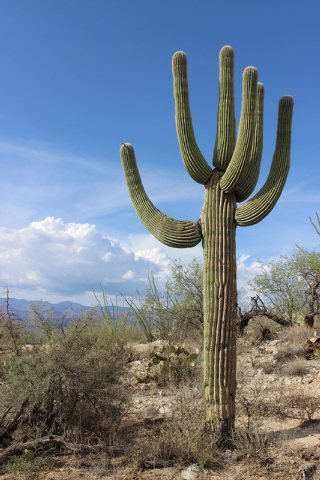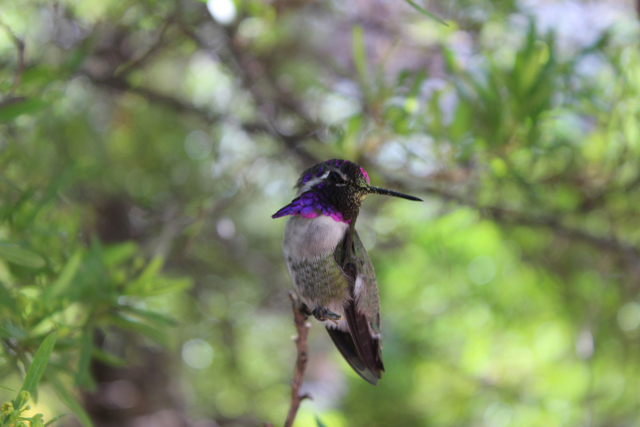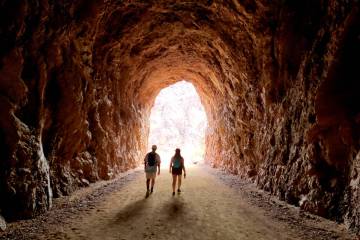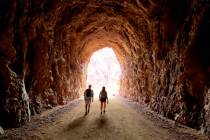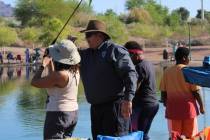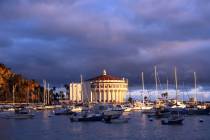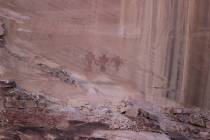Sonoran Desert filled with Southwestern icons
Longtime Southern Nevadans who love the Mojave Desert nevertheless often develop a yen to explore other arid landscapes. Typically they dream of the Sonoran Desert, whose scenery may have inspired them to live in the Southwest.
An excellent place to fulfill that desire is in and around Tucson, Ariz. There are dozens of places to take in the flora and fauna but two places stand out: Saguaro National Park and the Arizona-Sonora Desert Museum, which has one of the world’s best zoos.
Just as our Mojave Desert has its signature plant in the Joshua tree, the Sonoran Desert has its saguaro cactus (Carnegiea gigantean), a plant so distinctive it long ago became a symbol for the entire West. The saguaro is the largest cactus in the United States, with fully mature plants reaching heights of 40 feet or more. These slow growers may only reach 2 feet tall in 30 years, and it may take 50 to 100 years for a plant to grow its first arm.
One of the best places to see these magnificent plants up close is at Saguaro National Park, just outside of Tucson. This park is unique as it has two districts: The Tucson Mountain District is west of Tucson and faster to get to from Las Vegas; the Rincon Mountain District lies farther east.
Whichever district you visit, you will be immersed in a Sonoran Desert environment dominated by the mighty saguaro. In fact, there are more than 1.5 million of these stately cacti in the park!
Between the two districts there are more than 165 miles of hiking trails ranging from short day hikes to multiday excursions. You can walk into the park 24 hours a day but it’s only open to vehicles from sunrise to sunset in the Tucson Mountain District and 7 a.m. to sunset in the Rincon Mountain District. Contact www.nps.gov/sagu/ , or 520-733-5153, for details.
To further your enjoyment of the desert, be sure to visit the 98-acre Arizona-Sonora Desert Museum. The museum lies 14 miles west of Tucson, only 2 miles from Saguaro National Park West Visitors Center. Some 85 percent of the museum’s exhibits are outdoors, and they simulate natural environments of the Sonoran Desert. There are 2 miles of walking trails, both paved and gravel, and a remarkable 56,000 individual plants of 1,200 native plant species.
The facility’s worldwide celebrity as a zoo is based upon 230 native mammals, reptiles, amphibians, insects and birds. Some of the more interesting habitats you will walk through include the mountain woodland area and the desert grassland exhibits. Currently the mountain woodland area features a mountain lion, black bear, Mexican gray wolves and Merriam’s turkeys.
A good path to take is the one-half-mile Desert Loop Trail. In one area of the trail you might see a collared peccary (javelina), which looks like a miniature wild boar. Javelinas tend to congregate under the bridges along the west side of the loop.
Another must-see highlight of the museum is the hummingbird aviary, where you could spot eight species of hummingbirds. Through April 5 there is a raptor free-flight show twice daily. The presentations are not on a stage but in the open desert, adding to the thrill of the experience. Several kinds of raptors are featured, such as barn owls, peregrine falcons, and gray and Harris’s hawks.
The museum is open daily, year round. Seasonal hours are 8:30 a.m. to 5 p.m. For further information, contact www.desertmuseum.org/ or 520-883-2702.
Many of Deborah Wall’s columns have been compiled in the book “Base Camp Las Vegas, Hiking the Southwestern States.” She is also the author of “Great Hikes, a Cerca Country Guide” and a co-author of the newly released book “Access For All, Seeing the Southwest With Limited Mobility.” Wall can be reached at Deborabus@aol.com.

